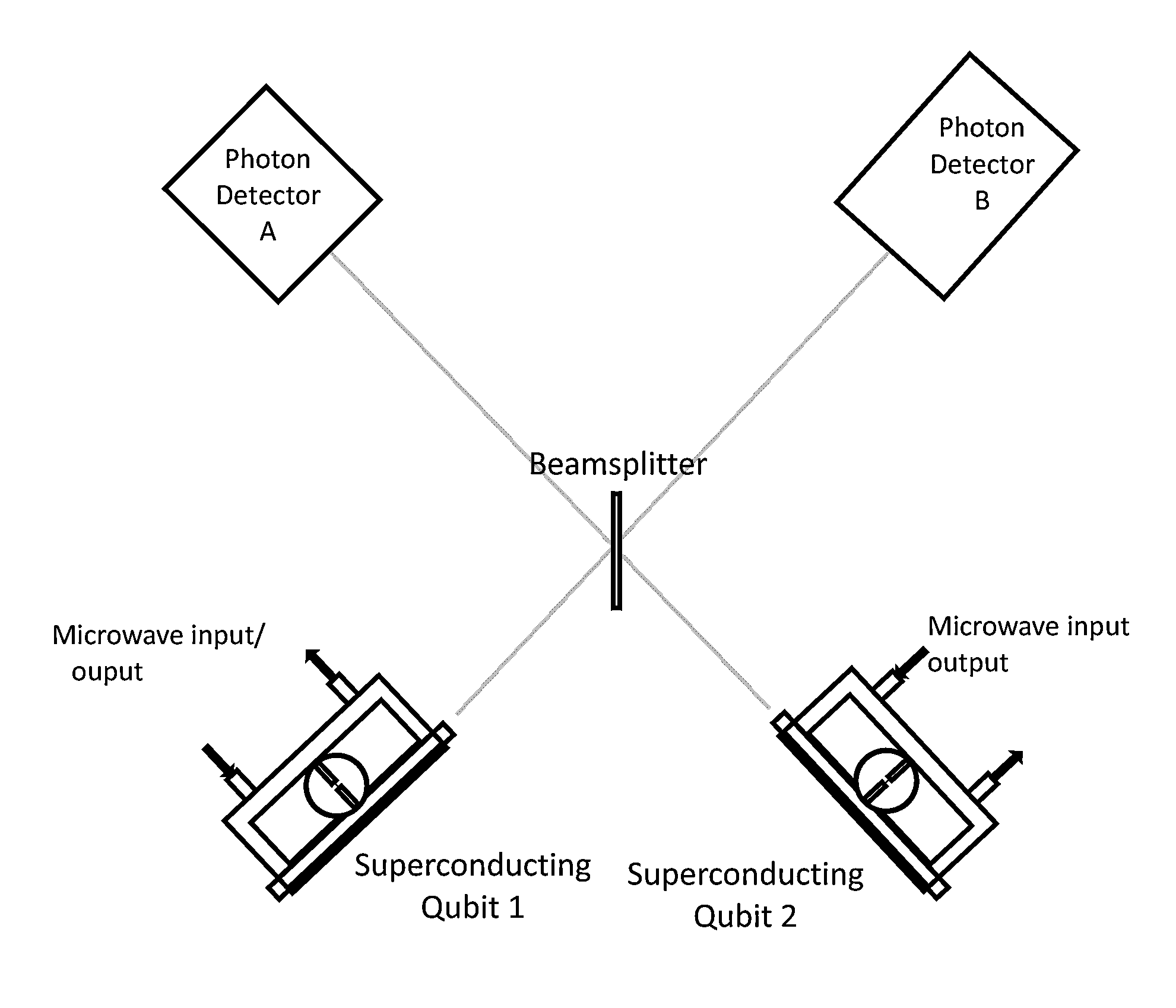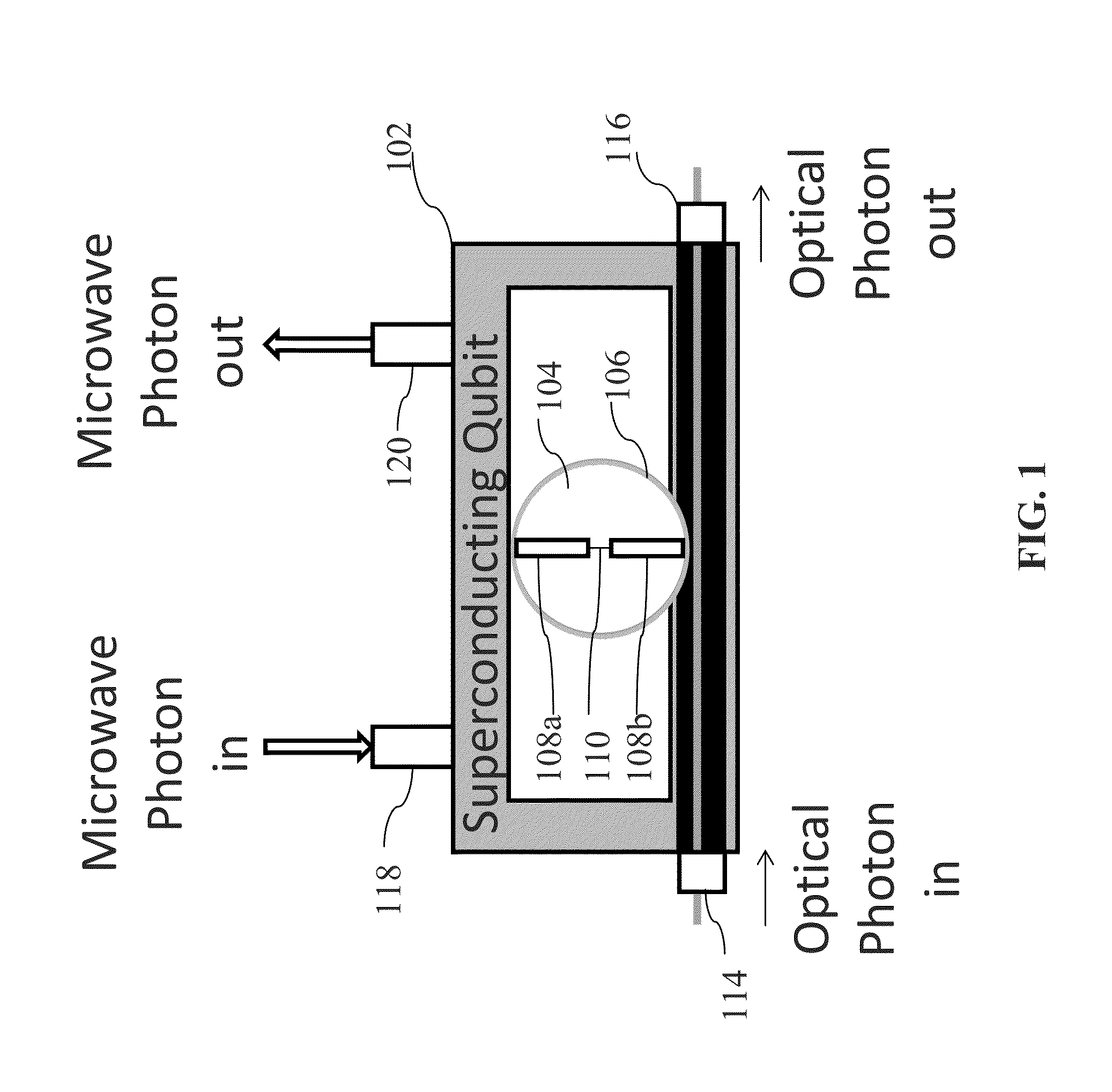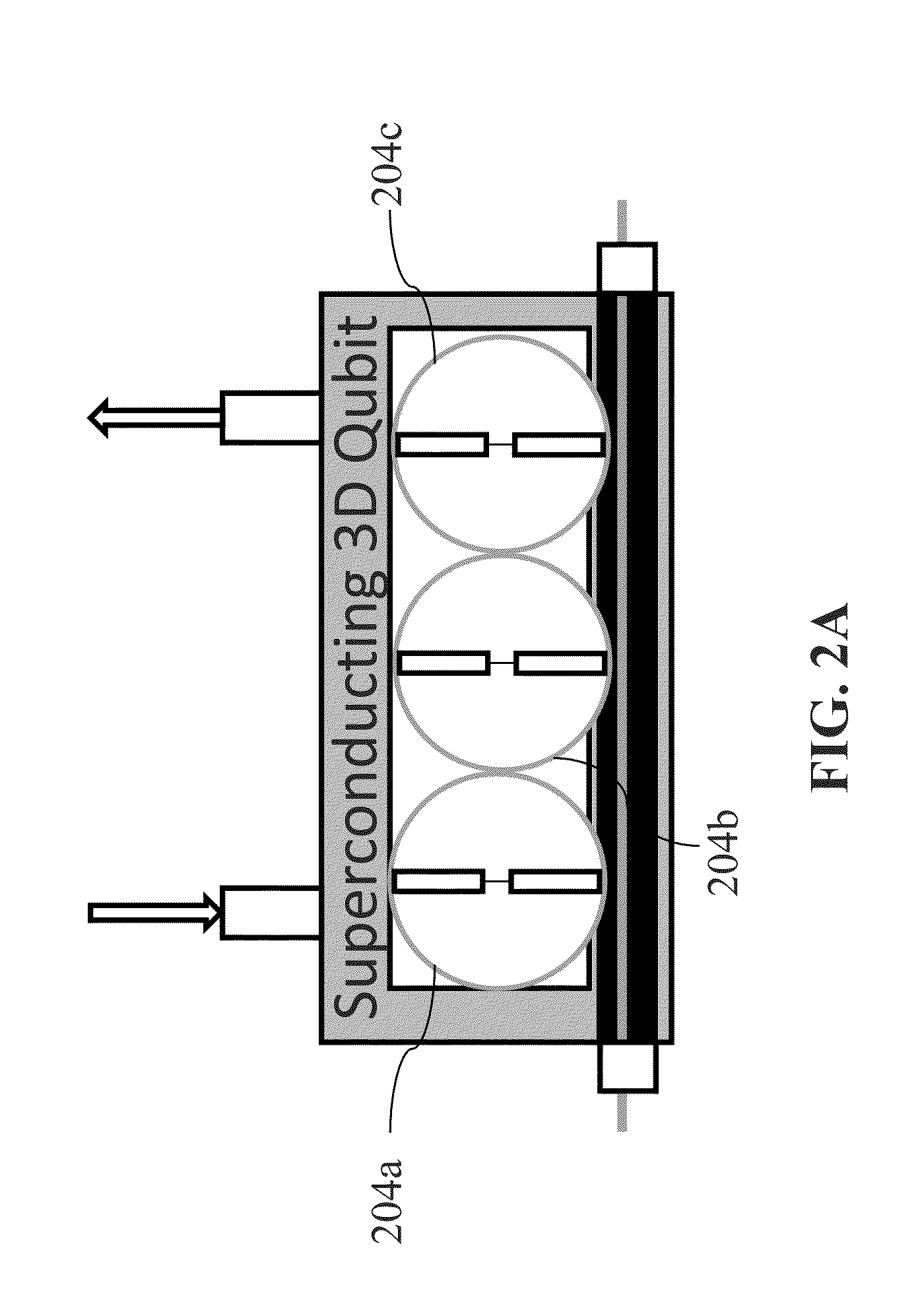System and method for quantum information transfer between optical photons and superconductive qubits
a quantum information transfer and optical photon technology, applied in nanoinformatics, instruments, computing models, etc., can solve the problems of imposing a fundamental limit on the ability to distinguish different coherent states, limiting discrimination to have a finite minimum probability of error, and arbitrary state cannot be cloned
- Summary
- Abstract
- Description
- Claims
- Application Information
AI Technical Summary
Benefits of technology
Problems solved by technology
Method used
Image
Examples
Embodiment Construction
[0025]The present invention is directed to a method and an electro-optic system which can exchange quantum information between optical qubits at frequencies ranging from infrared to ultraviolet and superconducting qubits at microwave frequencies between DC to a few hundred GHz. In some embodiments, the present invention uses high-Q superconducting qubits (for example, three-dimensional (3D) qubits) fabricated on a nonlinear electro-optic (EO) material that forms a high-Q whispering gallery optical cavity. The use of such superconducting qubits allows an order of magnitude improvement in the achievable coherent coupling rate over previous proposals that use parallel-plate capacitors or coplanar waveguides. The stronger coupling according to the present invention translates directly into fast exchange of information, which is critical to high-fidelity quantum operations.
[0026]There are several advantages to using superconducting qubits in direct coupling to the optical qubits. First, ...
PUM
 Login to View More
Login to View More Abstract
Description
Claims
Application Information
 Login to View More
Login to View More - R&D
- Intellectual Property
- Life Sciences
- Materials
- Tech Scout
- Unparalleled Data Quality
- Higher Quality Content
- 60% Fewer Hallucinations
Browse by: Latest US Patents, China's latest patents, Technical Efficacy Thesaurus, Application Domain, Technology Topic, Popular Technical Reports.
© 2025 PatSnap. All rights reserved.Legal|Privacy policy|Modern Slavery Act Transparency Statement|Sitemap|About US| Contact US: help@patsnap.com



